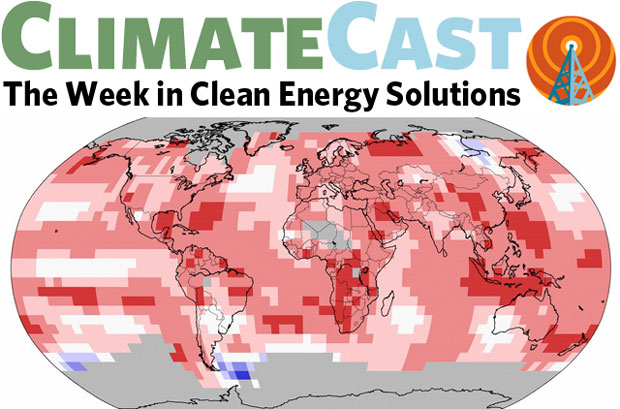Paris pact passes first of two approval thresholds
Thirty-one nations offered their formal ratification of the Paris climate accords at the UN General Assembly last week, pushing the pact over the first of two approval thresholds needed for it to take effect. The nations that joined at the virtual climate pep rally—including Brazil, Mexico, and Argentina—brought the number of ratifiers to 60, accounting for nearly 48 percent of global emissions, out of 55 percent required. India will ratify the agreement October 2, said Prime Minister Modi, while the EU will follow later next month, its top climate official said. But stronger national policies are needed to follow through on the Paris commitments: a new Nature Climate Change study finds the US must enact more ambitious policies to meet its 2025 goals.
The newest math on climate
Keeping global warming below 2˚C will require closing some coal mines and oil and gas wells even before they are exhausted, according to a new analysis from Oil Change International. The research—summarized by Bill McKibben—argues that we can allow less CO2 into the atmosphere than would be extracted using existing infrastructure, so no new wells or mines should be opened. If already-developed fields are allowed to decline naturally, oil production will fall 50 percent by 2033, allowing enough time to develop and rely upon fossil-free alternatives. The research makes an even stronger point than McKibben’s 2012 “Do the Math” calculations, which compared carbon budgets with existing reserves, most of which are not yet developed.
Latest PV contract: the cheapest new power anywhere
PV power set another new low-price record at auction last week, when an Abu Dhabi utility signed for 350 MW of new solar power at 2.4 cents per kilowatt-hour. The bid from a Japanese-Chinese consortium narrowly beat out three other sub-3-cent bidders, suggesting the low price is no outlier. This PV contract bested last month’s record by 17 percent, and is running far below the expected trajectory of price declines. Meanwhile, an 18-square-mile, 2-GW solar farm in northwest China is halfway to completion, and the Israeli government is seeking bids for a half-gigawatt solar farm, which on a per-capita basis would be the equivalent of 20 GW in the US.
Hottest summer on record bakes to a close
The three months just ended were the hottest ever measured on Earth, according to figures NOAA announced last week. The record warmth helped trigger intense flooding and wildfires, including the costliest blaze ever fought in California history—the Sobranes Fire burning near Big Sur, whose price-tag has soared past $200 million, not counting damage to property. The heat has led a colony of Caspian terns to nest on an Alaskan island 1,000 miles north of their usual breeding grounds. And if you hoped for a silver lining, guess again: new studies find the growth-retarding effects of heat and drought outweigh any gains that plants experience from higher levels of atmospheric CO2.
Clean energy boom shows its growing pains
New forecasts predict a slowdown next year in China’s clean energy build-out, as the country’s economic growth cools, and limits on transmission capacity lead to curtailments in solar and wind power. Even at a slower pace, the country plans to install 42 GW of wind and solar power next year, which will require a lot of capital—much of which is now being raised through the sale of green bonds in the global marketplace. In the US, falling PV prices are prompting a string of job cuts at clean energy manufacturers. Last week, PV-maker SolarWorld said it will lay off 13 percent of its workforce and inverter manufacturer Enphase will cut 11 percent—following a 15 percent cut announced last month by Sunpower.
A little climate miscellany
The Netherlands will slash its climate pollution 55 percent by 2030, according to a plan approved last week by the country’s parliament. Achieving that goal will require the country to close all five of its coal power plants, including three that opened in 2015. In Washington, DC, President Obama last week ordered all national security plans to take climate-change impacts into account. And on the Oregon coast, foresters are testing a new way to estimate the carbon stored in standing timber, with the help of a smartphone app that enables landowners to conduct the inventory themselves at significantly lower cost.
Image: NOAA National Centers for Environmental Information, State of the Climate: Global Analysis for August 2016.




